

Food Safety Tips for Consumers: Kitchen Cleaning
New
It’s important to keep your kitchen clean, because germs can easily lurk on the surfaces you touch frequently. Maintaining a clean kitchen can help decrease your risk of contracting a foodborne illness. Get some kitchen cleaning tips.
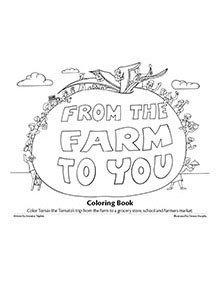
From the Farm to You Coloring Book
Reviewed
This 28-page coloring book follows Tomás the Tomato on a journey from farm to table, teaching young children about food origins and healthy eating.
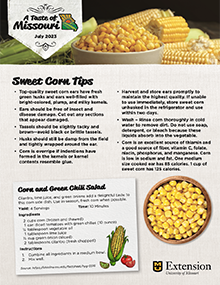
A Taste of Missouri — July — Sweet Corn
New $3.25
Easy-to-prepare recipes and tips for using sweet corn are displayed in this eight-page flier. Additional seasonal recipes, ingredients, tips, and safety measures are also included.

Preserve It Fresh, Preserve It Safe: 2023, No. 4 (July/August)
New
Learn about the possibility of using a ceramic cooktop when canning and how to make mango chutney.
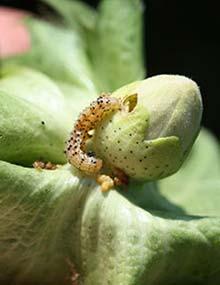
Technology-based Approaches to Managing Cotton Bollworm in Bt Cotton
New
The bollworm (Helicoverpa zea), also known as the corn earworm, is considered the most economically damaging caterpillar pest in Texas and Mid-southern U.S. cotton production.
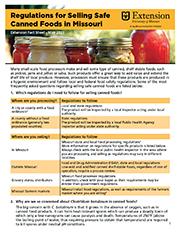
Regulations for Selling Safe Canned Foods in Missouri — Fact Sheet
Revised
Editor’s note
The following abstract describes a publication that is only available as a downloadable PDF.
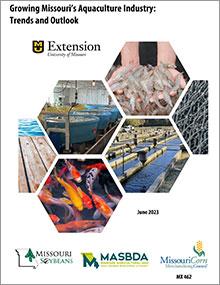
Growing Missouri’s Aquaculture Industry: Trends and Outlook
New
Learn aquaculture production trends, demand for seafood, industry competition and feed industry trends that affect Missouri’s aquaculture industry.

Solutions for Better Living | Cooking Third Edition
Revised
Healthy cooking and eating is important to everyone’s health and wellbeing. This magazine covers various health and nutrition topics with an emphasis on healthy cooking. Topics include food safety, savvy shopping and cooking with kids. This magazine offers fun, colorful and easy-to-read stories, tips and tricks on stretching your food budget, selecting and preparing in-season fruits and vegetables, how to avoid foodborne illnesses and much more.
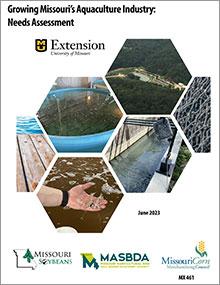
Growing Missouri’s Aquaculture Industry: Needs Assessment
New
Survey based needs assessment of Missouri aquaculture producers identifies common Missouri aquaculture species, fish and pond stocking market use, and perceptions about the future of the aquaculture industry.
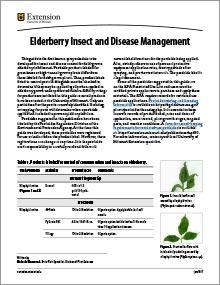
Elderberry Insect and Disease Management
Revised
This guide is the first known spray schedule to be developed for insect and disease control for field-grown elderberry in Missouri. Pesticide products labeled for greenhouse or high-tunnel-grown plants differ from those labeled for field-grown plants. Thus, product labels listed to control pests in this guide must be checked to determine if they may be applied legally when applied to elderberry grown under protected culture. Efficacy ratings for products are not listed in this guide as not all products have been tested at the University of Missouri.
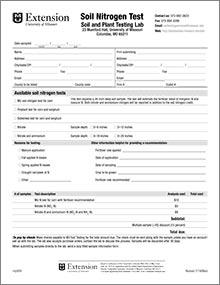
Soil Nitrogen Test Information Form
Revised
This testing focuses specifically on measuring nitrogen levels in soil samples for a variety of uses and functions. Complete and submit this form along with your samples.
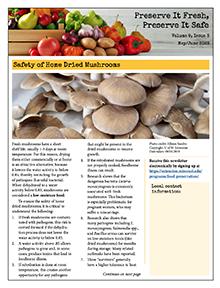
Preserve It Fresh, Preserve It Safe: 2023, No. 3 (May/June)
New
Learn how to safely dry and store mushrooms at home to prevent foodborne illnesses. Follow best practices for dehydration, rehydration, and cooking.

Choosing Foods for Me — Newsletter for Fourth Grade Curriculum Lesson 2: Dairy and Protein (Bundle of 25)
Reviewed $12
Editor's note
The following abstract describes a publication that is available for purchase or as a downloadable PDF.
If reprinting or copying, please complete the permissions form that can be found on the reprint and copy guidelines page. If sharing or posting, please link directly to this page.

Choosing Foods for Me — Newsletter for Fourth Grade Curriculum Lesson 5: The Nutrition Facts Label (Bundle of 25)
Revised $12
Editor's note
The following abstract describes a publication that is available for purchase or as a downloadable PDF.
If reprinting or copying, please complete the permissions form that can be found on the reprint and copy guidelines page. If sharing or posting, please link directly to this page.

Adventures in Nutrition With the Show Me Chef — Newsletter for Kindergarten Curriculum Lesson 7: Protein (Bundle of 25)
Reviewed $12
Editor's note
The following abstract describes a publication that is available for purchase or as a downloadable PDF.
If reprinting or copying, please complete the permissions form that can be found on the reprint and copy guidelines page. If sharing or posting, please link directly to this page.

Fun With Food and Fitness — Newsletter for First Grade Curriculum Lesson 8: Food Groups (Bundle of 25)
Reviewed $12
Editor's note
The following abstract describes a publication that is available for purchase or as a downloadable PDF.
If reprinting or copying, please complete the permissions form that can be found on the reprint and copy guidelines page. If sharing or posting, please link directly to this page.

Choosing Foods for Me — Newsletter for Fourth Grade Curriculum Lesson 8: Food Safety (Bundle of 25)
Reviewed $12
Editor's note
The following abstract describes a publication that is available for purchase or as a downloadable PDF.
If reprinting or copying, please complete the permissions form that can be found on the reprint and copy guidelines page. If sharing or posting, please link directly to this page.

Fun With Food and Fitness — Newsletter for First Grade Curriculum Lesson 1: Pesky Germs (Bundle of 25)
Reviewed $12
This newsletter corresponds with Lesson 1 of the Show Me Nutrition First Grade curriculum. Learn the importance of hand washing to avoid illness.

Adventures in Nutrition With the Show Me Chef — Newsletter for Kindergarten Curriculum Lesson 8: Adventures in Healthy Eating (Bundle of 25)
Reviewed $12
Editor's note
The following abstract describes a publication that is available for purchase or as a downloadable PDF.
If reprinting or copying, please complete the permissions form that can be found on the reprint and copy guidelines page. If sharing or posting, please link directly to this page.

Food Group Express — Newsletter for Second Grade Curriculum Lesson 3: Vegetables (Bundle of 25)
Reviewed $12
Editor's note
The following abstract describes a publication that is available for purchase or as a downloadable PDF.
If reprinting or copying, please complete the permissions form that can be found on the reprint and copy guidelines page. If sharing or posting, please link directly to this page.

Exploring the Food Groups — Newsletter for Fifth Grade Curriculum Lesson 1: Nutrients (Bundle of 25)
Reviewed $12
Editor's note
The following abstract describes a publication that is available for purchase or as a downloadable PDF.
If reprinting or copying, please complete the permissions form that can be found on the reprint and copy guidelines page. If sharing or posting, please link directly to this page.

Food Group Express — Newsletter for Second Grade Curriculum Lesson 6: Protein (Bundle of 25)
Reviewed $12
Editor's note
The following abstract describes a publication that is available for purchase or as a downloadable PDF.
If reprinting or copying, please complete the permissions form that can be found on the reprint and copy guidelines page. If sharing or posting, please link directly to this page.

Exploring the Food Groups — Newsletter for Fifth Grade Curriculum Lesson 4: Breakfast (Bundle of 25)
Reviewed $12
Editor's note
The following abstract describes a publication that is available for purchase or as a downloadable PDF.
If reprinting or copying, please complete the permissions form that can be found on the reprint and copy guidelines page. If sharing or posting, please link directly to this page.

Exploring the Food Groups — Newsletter for Fifth Grade Curriculum Lesson 7: Calcium (Bundle of 25)
Reviewed $12
Editor's note
The following abstract describes a publication that is available for purchase or as a downloadable PDF.
If reprinting or copying, please complete the permissions form that can be found on the reprint and copy guidelines page. If sharing or posting, please link directly to this page.
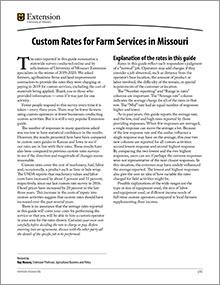
Custom Rates for Farm Services in Missouri
Revised
Get custom service rates for fieldwork, planting, fertilizer, crop harvesting, hauling and heavy equipment activities from a survey of farmers, agribusinesses and contractors.